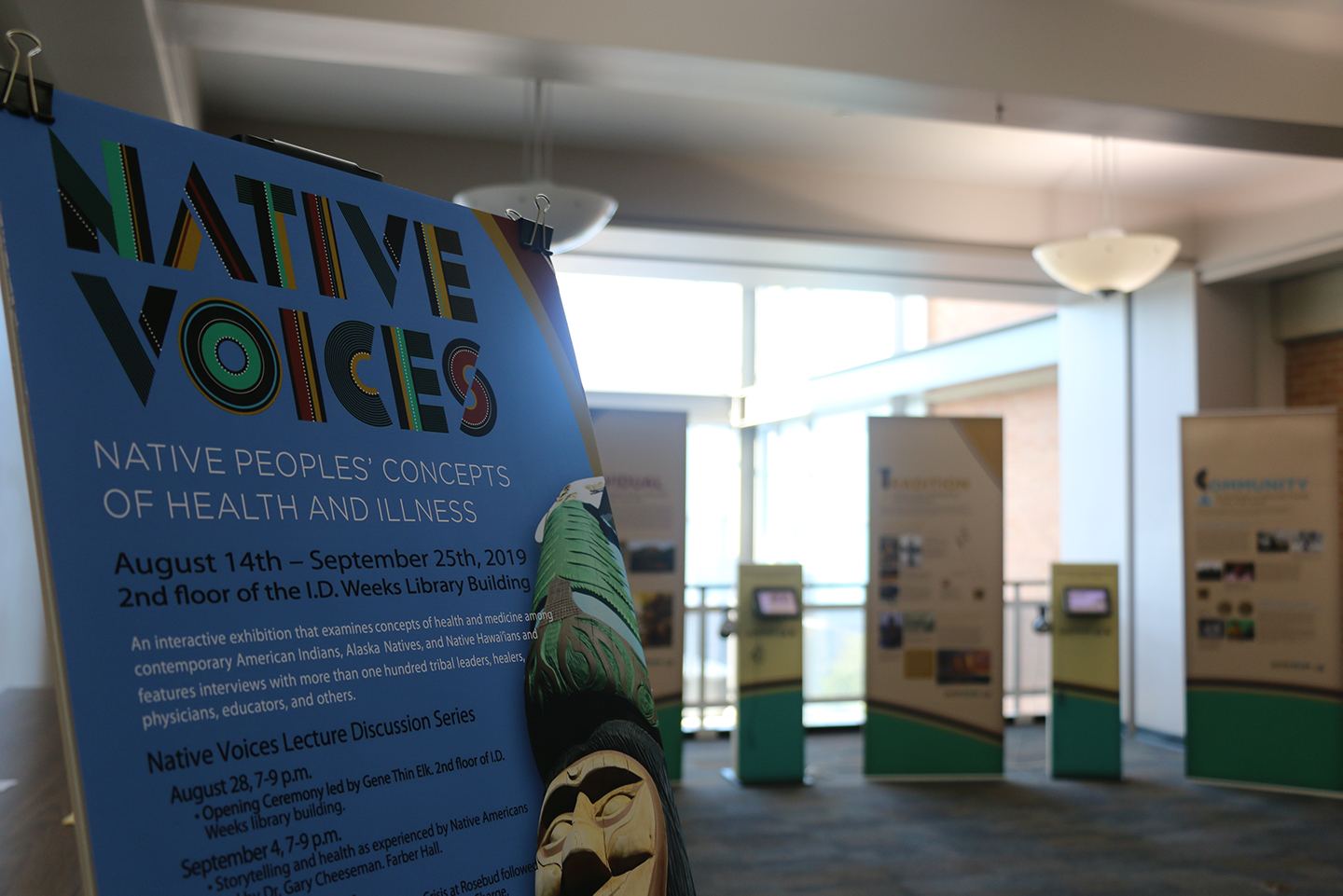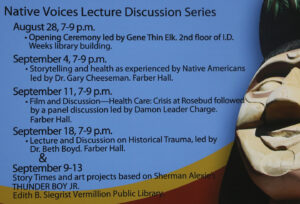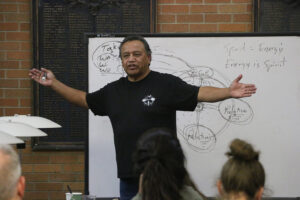
Native Voices lecture series exhibits health, wellness in Native American culture
Around the world, people of all cultures view relationships of health, wellness and illness differently. Throughout the month of September, the University Libraries, in conjunction with other USD groups, are hosting the Native Voices exhibit.
Native Voices is a stand-alone exhibit set up in the I.D. Weeks Library from the National Library of Medicine (NLM) and American Library Association. NLM describes the exhibit, on display through September, as the following:
“Native Voices: Native Peoples’ Concepts of Health and Illness explores the interconnectedness of wellness, illness and cultural life for Native Americans, Alaska Natives and Native Hawaiians. Visitors will discover how Native concepts of health and illness are closely tied to the concepts of community, spirit and the land.”

Caroline Anderberg, research assessment and diversity librarian, said the libraries and USD applied for the exhibit to offer students perspectives within different belief systems.
“I hope the students will grow in their awareness of the Native American community and how they perceive illness and health and wellness and what’s important to them,” Anderberg said.
A series of lectures and discussion are accompanying the exhibit, the first given by Gene Thin Elk, former director of the Native American Cultural Center at USD, last Wednesday. Thin Elk spoke on how wellness is centered around how a person uses their energy throughout life.
“How we use our energy in this existence is how our life goes,” Thin Elk said. “If it’s energy for unification and compassion, that’s the way things will go. But if it’s for harshness and division, most people that have that division and harshness is the fact that they feel divided within themselves. In that process they lose themselves.”
One big idea that Thin Elk iterated was that “spirit is energy and energy is spirit.”

“There’s no religion to it, no ceremony, nothing,” Thin Elk said. “It’s just the way of being a human being. Once you do that, then go to your religion, or you go to your spiritual way of life, go to whatever, then you understand why you’re there.”
Another of Thin Elk’s points was the importance of living day-by-day instead of worrying about the past or future.
“You can exist and try to exist in yesterday, or try in anticipation of tomorrow, but you’re just existing,” Thin Elk said. “You can’t live tomorrow, you can’t live yesterday. The only day you can live is today. And if you do that in the way we put it up there, you’re going to find your spirit and your spirit is eternity.”
Thin Elk’s lecture at USD is part of his Red Road teachings that he’s been speaking on around the world since 1980. There will be a Red Road Gathering on Sept. 26 and 27 at the Vermillion Armory.
The Native Voices exhibit will be in the I.D. Weeks Library on the second floor until Sept. 25, and there will also be lectures and discussions on Sept. 4, 11 and 18.
Thin Elk said he believes Native American students on campus could find pride and affirmation in who they are because of the exhibit and lecture series.
“We have voice here, we have representation here,” Thin Elk said. “We have elders that are here, we have people that are presenting here. It shows us that we don’t have to give up our culture, our teachings and our language to be able to also be educated, highly-skilled in academia.”

